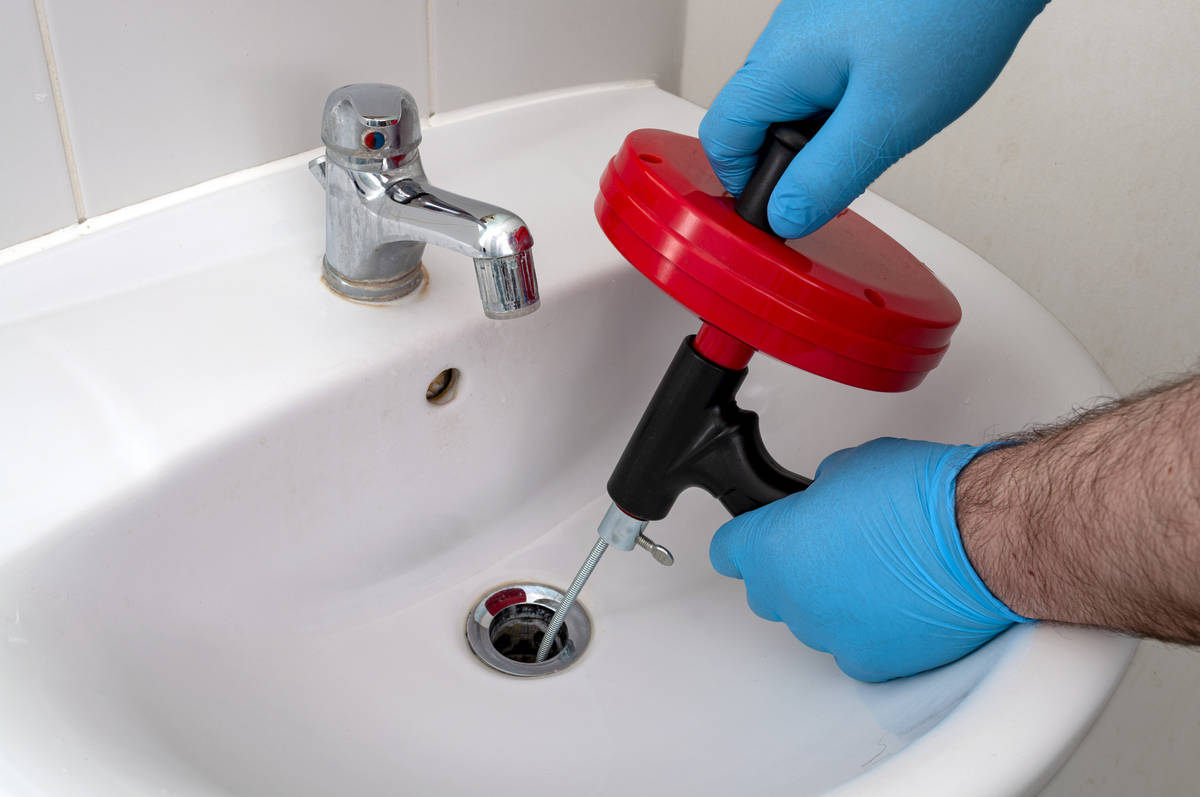Use right tools to unclog backup in pipe
Q: Several of the drains in my house are backed up. I have tried plunging the toilet and clearing the drain trap in the sink, but I can’t get it to drain. My neighbor has a cable drain machine with several attachments included, but I’ve never used a device like that. Can you give me the details?
A: Clearing a drain requires a little investigative work and the right tools. If only one sink or toilet is clogged, the problem would obviously be isolated to that single fixture. Since you have multiple backups, your problem is going to be deeper — specifically, in a large waste line. The larger line handles multiple drains as they branch off of it.
If the obstruction is lodged in a pipe, you can either grab it and pull it out, push it through or grind it up. Pulling it out can be done with a corkscrew attachment.
If the obstruction is a tree root, you will have to use a cutting head.
If it is a grease clog, you will need to call in a plumber with a water jet as the grease will close up behind any cable you insert and still leave you with a clogged drain.
You must be ready for personal hazards. Wear heavy gloves to hold and guide the cable into the drain (and to protect yourself). I have heard of workers who cut their hands and become sick from bacteria.
Also, as you are chewing through an obstruction, the cable may snap. If you think you had problems with just a backed-up drain, boy, will you have problems if that happens. Not only is the drain still plugged, but your cable is down there with it.
For small fixture drains, tubs and showers, you can use a quarter-inch cable. For small floor drains, you can use cable that measures three-eighths of an inch or half an inch. For tree roots, you must use cable measuring five-eighths of an inch or larger. This will require a heavy-duty machine, and most homeowner machines can’t accommodate this size.
If you’re not scared yet, grab your neighbor’s drain cleaner and head back to your house. You can start by using the corkscrew attachment.
Find the nearest cleanout for the area and remove the cap. If a cleanout isn’t available, then remove the trap from the sink and run the cable down the trap arm. You will find a cleanout outside of the house, around the kitchen sink or under a sink cabinet; generally, they are in various areas, depending on the size of the house.
Move the machine within a foot or two of the opening. This is so that, as the cable spins, it won’t whip around or get kinked. A foot pedal will start the machine, and some machines have an automatic feed lever to move the cable forward or in reverse.
Pull the cable out of the machine and feed it into the hole as far as it will go. After that, place the motor in the forward position. Hold the cable with one or both gloved hands, depending on its size.
Then, start the machine by stepping on the foot pedal and advance the cable by hand or by the lever if your machine has the automatic advance feature. Like I said earlier, you may be able to grab the obstruction with the corkscrew and pull it out, but drain machines are effective at cutting up obstructions.
You can switch to either the arrowhead or the U-shaped cutter. As you run into the obstruction, let the machine do the work. You can move the cable back and forth to chew up the obstruction, and it’s a good idea to run some water down the drain to help wash away the debris as the cutting head does its job.
Remember to watch the slack in the cable between the machine and the drain. If it starts to twist too much, take your foot off of the pedal and rotate the drum in the other direction to relieve the tension. Like I said, if the cable snaps, you’re in deep.
Another method you could try is using kinetic energy in the form of a shock wave. There are various products available that produce good results. One product is essentially a rubber bladder that screws onto the end of your garden hose. Various sizes are made to accommodate drain pipes from an inch to 6 inches.
To use this, screw it onto the end of the hose, place it into the drain as far as it will go and turn on the water. It also comes with an adapter so you can use an indoor faucet, as the threads are different. As water runs through the bladder, it expands to form a tight seal around the inside of the pipe. The bladder then starts to pulsate and shoot jets of water to hopefully dislodge the blockage.
Lastly, there is a water ram. Just as the name implies it rams a shock wave down the pipe to break up and dislodge the blockage. This uses a small cartridge as a charging mechanism. You hang on to it with two hands, pull the trigger and the ram forces the shock wave down the length of the pipe. It’s sort of like a tiny jackhammer.
Mike Klimek is a licensed contractor and owner of Las Vegas Handyman. Questions may be sent by email to handymanoflasvegas@msn.com. Or, mail to 4710 W. Dewey Drive, No. 100, Las Vegas, NV 89118. His web address is www.handymanoflasvegas.com.
Do-it-yourself
Project: Drain line clogs
Cost: From around $25
Time: 1-2 hours
Difficulty: ★★★























